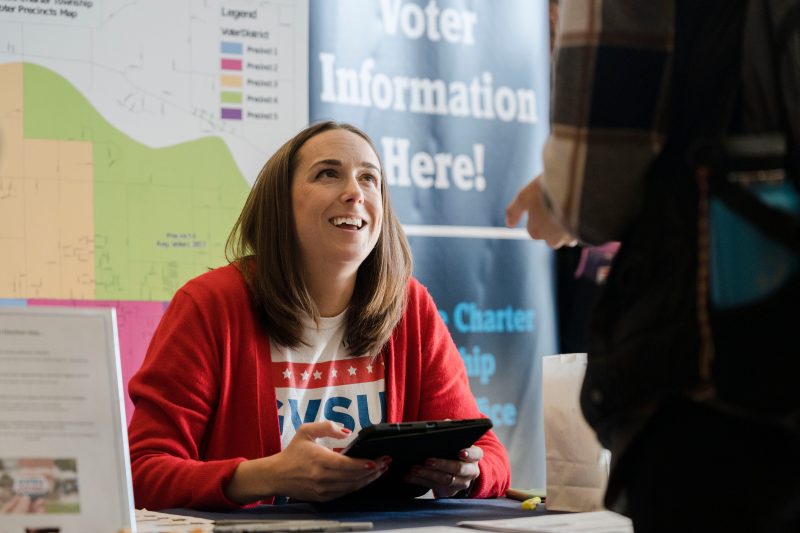Gen Z women are the future Republicans were so worried about

Tucked into a fascinating article about partisanship and names in America, The Washington Post’s Andrew Van Dam and Lenny Bronner included a chart that captures a remarkable divide: the split in party identity by gender among younger Americans.
The chart, using voter registration data from the firm L2, looked like the one below. At left is the distribution of party identification among women by age (young to older as you move left to right). At right, the same data for men. (The percentages reflect the portion of the total electorate represented by that age and gender.)
Americans under 30 are more likely to be registered independents or third party than to be Democrats or Republicans — but that’s because of young men. Young women are about as likely to be registered as Democrats as to be independents. Neither group is terribly likely to be registered as Republican.
One reason for this was captured in a new analysis published last week by Gallup: Young people are more likely to agree with liberal positions than they used to be, but young women have shifted the most to the left.
To measure this, Gallup compared views on an array of issue questions from polling conducted from 2008 to 2016 — let’s call this the Barack Obama era — with the same questions asked from 2017 to 2024, which we’ll call the Donald Trump era. Among respondents ages 30 and up in both eras, the shifts to the left were about the same. Women were slightly more likely to hold stronger liberal positions than men, illustrated on the graph below by the individual issues (identified with letters) appearing above the diagonal line.
On some issues, like “think use of marijuana should be legal,” both men and women became more liberal to the same extent, so the (J) representing that question appears right on the line. On other issues, like (K) (“the federal government is responsible for ensuring healthcare coverage”), women shifted to the left by a larger amount, so it appears well above the diagonal line. On only one issue did both men and women move away from the liberal position: (W), the U.S. is spending too much on defense.
Now compare that with the difference between men and women under 30. In. nearly every case, the issues appear well above the diagonal line — meaning that young women shifted much more to the left than did young men.
There are exceptions, you’ll notice. But the correlation in the shift between older women and older men is far stronger than the correlation between younger women and younger men.
In fact, younger women also shifted to the left relative to older women. The correlation between older women and younger men is stronger than the correlation between older women and younger women.
Comparing women ages 18 to 29 in the 2008 to 2016 era means we’re comparing a different set of women in that age range more recently. A 21-year-old woman in 2008 was 30 in 2017. So this is not necessarily a shift in personal views, but instead in generational ones.
In her analysis of the Gallup data, the New York Times’s Claire Cain Miller points to the likely role Trump played in this shift, including his attacks on Hillary Clinton in the 2016 election. A number of other factors probably contributed, like the #MeToo movement and Black Lives Matter. The biggest movement among younger women, though, was on environmental issues.
What’s striking is that shift was so disproportionately among women, as other data have also shown. Men, young and old, moved to the left on the measures Gallup considered, but in correlation with one another. Women didn’t.
Barack Obama’s 2008 election was seen as the advent of a new, more liberal and more diverse American electorate. Trump’s 2016 election was heavily a reaction to that shift, a response to the ways in which America was changing.
Young American women, the Gallup data suggests, manifested the change about which Republicans were so concerned.



